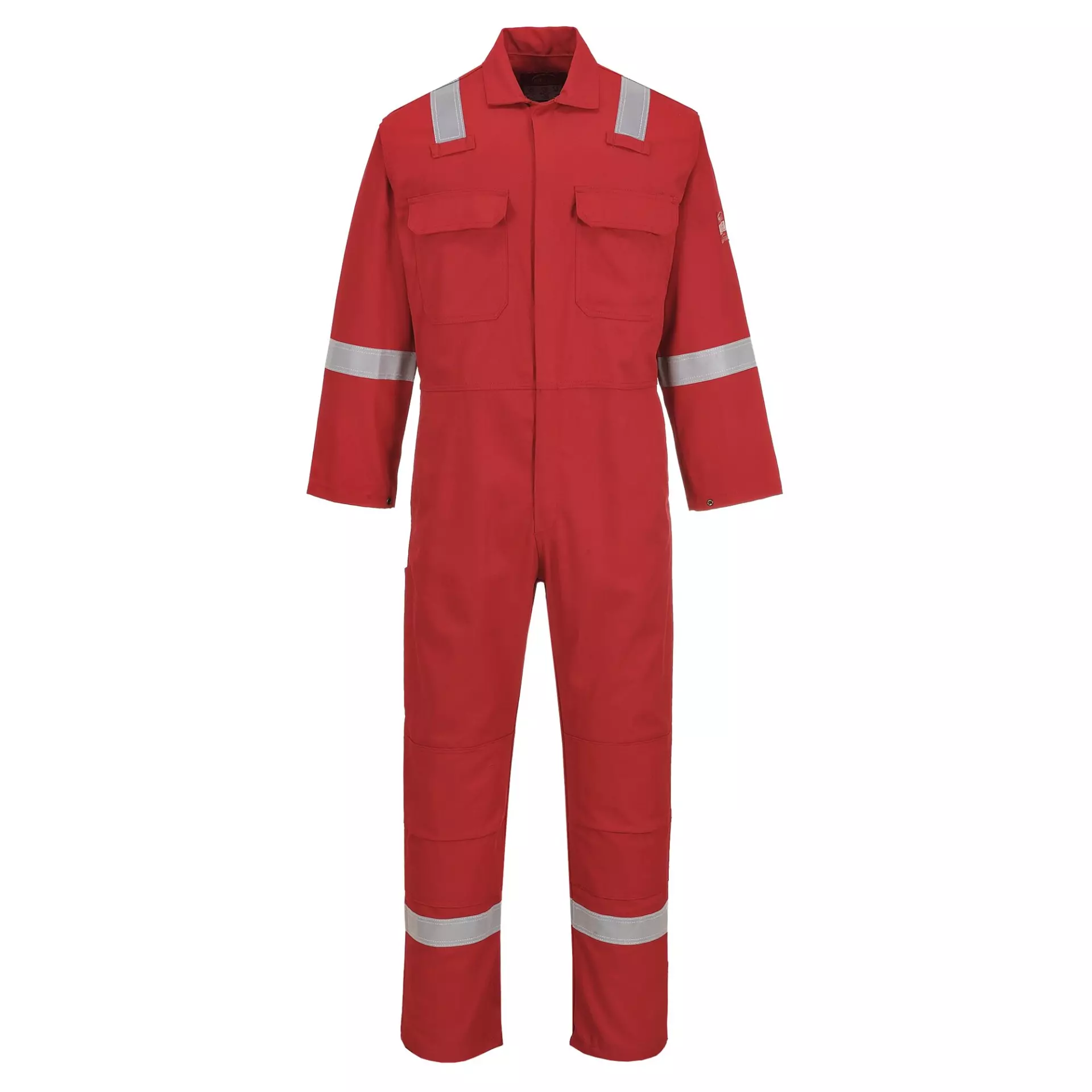
Features You'll Love

Fit · Regular
Determines how closely the overalls follow your body shape, affecting comfort, range of motion, and ability to layer clothing underneath.

Pocket System · Knee Pad Pockets
Integrated knee pad pockets provide essential cushioning and protection, keeping you comfortable during kneeling tasks.
Portwest
Bizweld Iona FR Coverall, Red
Bizweld Iona FR Coverall, Red
4.4 / 5
92,24 €
Choose size
Free delivery
Features You'll Love

Fit · Regular
Determines how closely the overalls follow your body shape, affecting comfort, range of motion, and ability to layer clothing underneath.

Pocket System · Knee Pad Pockets
Integrated knee pad pockets provide essential cushioning and protection, keeping you comfortable during kneeling tasks.
Product description
The Bizweld Work FR Coverall provides comprehensive flame-resistant protection with enhanced visibility features for industrial applications. This coverall combines protection against radiant, convective and contact heat with certified molten metal splash resistance. The design incorporates premium flame-resistant reflective tape and multiple functional pockets for tools and equipment storage.
Product Features:
- Premium sew on flame resistant reflective tape on shoulders, sleeves and legs
- Two tier knee pad pockets allowing two positioning options for knee pad insertion
- 8 pockets for ample storage including two chest pockets with stud closure, rule pocket, and concealed phone pocket
- Radio loops for easy clipping of a radio
- Concealed stud front for easy access with stud adjustable cuffs for secure fit
Technical Details:
- 40+ UPF rated fabric to block 98% of UV rays
- Protection against radiant, convective and contact heat
- Certified protection against molten metal splash
- CE-CAT III and CE certified
Standards:
- EN ISO 11612 (A1+A2, B1, C1, E2, F1)
- EN ISO 11611 Class 1 (A1+A2)
- IEC 61482-2 IEC 61482-1-1 (ELIM 8.3 CAL/CM², ATPV 10.9 CAL/CM²)
- ASTM F1959/F1959M-12 (ATPV 11.2 CAL/CM² (HAF = 80.4%))